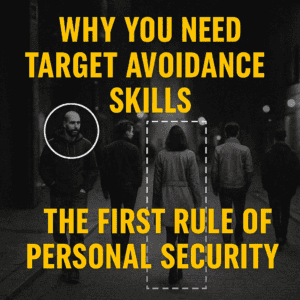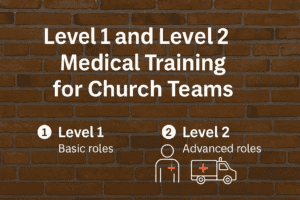The Routine Activities Theory, developed by renowned criminologist Marcus Felson, has been a significant framework for examining and addressing crimes at various places, including churches and schools.
This theory asserts that criminal activities are likely to occur when three elements converge in space and time: motivated offenders, suitable targets, and the absence of capable guardians.
By understanding the dynamics of such convergence, establishments like churches and schools can better identify vulnerabilities, implement effective security measures, and ultimately enhance the safety of their communities.
In recent years, concerns over safety in churches and schools have increased due to incidents that highlight the importance of preparedness and proactive security measures.
The Routine Activities Theory offers a useful lens for these institutions to assess their surroundings and evaluate potential risks.
By analyzing factors such as building layouts, accessibility, congregation or student body information, and existing security protocols, they can identify possible crime attractors and initiate measures to mitigate them.
Applying Routine Activities Theory within churches and schools enables these institutions to strengthen their efforts for a safer environment.
By focusing on the relationships between motivated offenders, suitable targets, and the presence of capable guardians, it becomes possible to create a comprehensive security approach.
In doing so, churches and schools can better protect their communities while providing a space for learning, growth, and well-being.
The Foundation of Routine Activities Theory
Crime Event Triad
One of the key components of Routine Activities Theory is the Crime Event Triad. This concept is based on three elements involved in any crime event:
- A motivated offender
- A suitable target
- The absence of capable guardianship
The Triad helps to understand crime patterns and predict potential offenses in particular settings, such as churches and schools.
By analyzing the environment, routine activities, and the presence or absence of capable guardians in these institutions, administrators may develop safety and security measures accordingly.
Rational Choice Perspective
Another element of Felson’s approach to crime analysis is rooted in Rational Choice Theory. This perspective assumes that offenders make rational decisions when considering their criminal activities.
They weigh the costs and benefits of committing a crime, considering factors such as risk, reward, effort, and ease of access.
Applying this perspective to crime analysis in churches and schools allows administrators to identify potential criminal opportunities and enact measures to deter motivated offenders.
For example, they can increase surveillance, control access, and encourage members of the community to be vigilant.
By understanding the rational decision-making process behind criminal behavior, routine activities theory can play an essential role in designing strategies to enhance safety and security in educational and religious institutions.
Core Concepts
Again, this theory is based upon the convergence of three factors: motivated offenders, suitable targets, and the absence of capable guardianship at a specific time and place. Let’s take a brief look at these concepts and their significance to crime prevention in religious and educational settings.
Motivated Offenders
A key component of the Routine Activities Theory is the presence of a motivated offender—an individual who is willing and able to commit a crime.
To create a safe environment for churches and schools, it is essential to identify and monitor the presence of such individuals. This may involve analyzing the profiles of past offenders in similar contexts, potential sources of motivation (e.g., personal grievances, mental health), and patterns of behavior that could indicate criminal intent (leakage, etc.).
Suitable Targets
The next element in Routine Activities Theory is the availability of suitable targets. These are potential victims or objects that are considered attractive for criminal activity because of their value, accessibility, or vulnerability.
Churches and schools should concentrate on minimizing the risk to vulnerable targets by improving their security measures.
This may include the use of physical barriers (such as fences or alarms), access control processes for entrances and exits, and efforts to reduce valuable items’ visibility.
Capable Guardianship
Lastly, the theory emphasizes the role of capable guardianship in preventing criminal activities. A capable guardian is any entity that can deter potential offenders from acting on their criminal intentions—examples include security personnel, armed staff, surveillance cameras, and even the general public.
Putting measures in place to bolster effective guardianship within churches and schools can significantly reduce the risk of crime.
This could involve training staff and volunteers to identify potential threats, investing in modern security technologies, or fostering a culture of safety with relevant, ongoing education and training for all staff.
Evolution and Empirical Validation
Subsequent Research and Adaptation
As research built upon Cohen and Felson’s theory, the notion of guardianship expanded, ushering in a more comprehensive understanding of routine activities and crime.
For instance, the evolution of the definition of guardianship incorporates not only physical presence but also community involvement, surveillance systems, and environmental design as preventive measures.
Some key developments in Routine Activities Theory include:
- Temporal and spatial considerations: Recent studies have explored the effects of time and location on routine activities, highlighting that certain times and places may be more prone to criminal events.
- Influence of technology: The advent of the internet and technological advancements have led to new forms of crime and unique challenges in applying the theory, requiring further research to adapt to the ever-changing landscape.
Using these findings, schools and churches can employ Routine Activities Theory to identify potential risks and vulnerabilities in their daily activities.
By establishing security measures and fostering community awareness, they can effectively manage and minimize opportunities for criminal activity.
Applications of Routine Activities Theory
Let’s take a look at the application of Routine Activities Theory with a focus on crime prevention strategies and its influence on policing policies.
Crime Prevention Strategies
In the context of churches and schools, Routine Activities Theory can inform effective crime prevention measures. Therefore, understanding the interplay between these elements can guide the development of successful strategies.
First, target hardening measures, such as installing surveillance cameras, reinforcing doors and windows, and improving lighting around the premises, can make churches and schools less attractive to would-be offenders.
These steps increase the effort required to commit a crime, subsequently reducing the number of suitable targets.
Another strategy is natural surveillance. By designing landscapes and building layouts that facilitate visibility (i.e., unobstructed lines of sight and well-lit areas), the probability of a crime being observed by a potential guardian is increased. This visual presence serves as a deterrent to criminals.
Finally, fostering a strong sense of community involvement plays a vital role in crime prevention. Encouraging participation from staff, parents, and congregation members in safety initiatives and programs will generate a collective commitment to maintaining a secure environment and discourage criminal activity.
Influence on Policing Policies
Routine Activities Theory has significantly impacted policing policies, particularly in the design and implementation of problem-oriented policing and community policing approaches.
Problem-Oriented Policing (POP) emphasizes identifying and tackling specific crime issues rather than responding to individual incidents. This method involves understanding the context, causes, and consequences of particular crime patterns and formulating tailored strategies to address them.
Routine Activities Theory aids in identifying and analyzing the factors contributing to the crime, allowing for targeted interventions and resource allocation.
Community Policing is an approach that emphasizes collaboration between law enforcement agencies and community members to prevent and address crime.
Routine Activities Theory underscores the importance of capable guardians in maintaining a safe environment; therefore, fostering strong relationships between police and the community is central to this approach.
Initiatives such as neighborhood watch programs and community-oriented events can enhance the exchange of information and increase trust between police and residents, ultimately aiding in crime reduction.
Extensions and Related Theories
Lifestyle Theory
Lifestyle Theory of Criminology infers that certain lifestyles or daily routines increase an individual’s vulnerability to criminal victimization.
Churches and schools have unique routines and environmental factors that can significantly impact their safety. For instance, the high number of visitors, distinctive schedules, and open access inherent in churches and schools can create an environment where crime opportunities thrive.
Some factors affecting the vulnerability of churches and schools include:
- Location: Proximity to high crime areas, public transportation, and commercial businesses.
- Design: Architecture, visibility, lighting, and signage impacting ease of access and “natural surveillance.”
- Schedule: Regular activities, hours of operation, and events held during busy or low-traffic periods.
To decrease vulnerability and enhance safety, church and school stakeholders can examine these factors and make targeted adjustments based on their specific environment and routines. Addressing such issues can ultimately contribute to a reduction in crime.
Crime Pattern Theory
Crime Pattern Theory is an extension of Routine Activities Theory and focuses on how criminal opportunities unfold in space and time.
Understanding the spatial and temporal patterns of criminal events can improve security measures in churches and schools, and inform decisions regarding resource allocation.
Key concepts in Crime Pattern Theory that are relevant to churches and schools include:
- Nodes: Places frequented by potential offenders, such as schools, entertainment venues, or shopping centers.
- Paths: Common routes used by potential offenders to travel between nodes.
- Edges: Boundaries between different land uses or social groups that often coincide with crime concentrations.
By analyzing these crime pattern concepts in relation to their specific context, churches and schools can make informed decisions to enhance their security.
Implementing strategies such as increased surveillance, improved lighting, and access control can help deter potential offenders and mitigate their risk of criminal victimization.
Criticisms and Debates
Critiques of Methodological Bases
Routine Activities Theory by Marcus Felson has also been the subject of debate and criticism in the field of sociology. One of the notable critiques is in the methodological basis of the theory.
Critics argue that the theory does not take into account the wider social context in which crimes occur, thus limiting its applicability to understanding crime phenomena in various settings, such as churches and schools.
A critique put forth by Hindelang, Gottfredson, and Garofalo pertains to the focus of the theory on opportunity as a primary factor in explaining crime occurrences.
While the theory highlights the importance of opportunities in predicting criminal incidents, it pays less attention to the motivational aspects that drive individuals to commit crimes.
This criticism questions the theory’s ability to fully account for the complex nature of crime, especially when considering diverse institutions like churches and schools, which may have unique challenges and factors influencing criminal behavior.
Another methodological concern is the reliability of measurement in the Routine Activities Theory. Critics argue that the operationalization of key theoretical concepts such as the motivated offender, suitable target, and the capable guardian, can be subjective and may vary across studies.
This limitation potentially affects the generalizability and comparability of findings based on the theory, making it challenging for institutions like churches and schools to derive consistent insights on safety and security measures.
In response to these critiques, some scholars have suggested the integration of other theories to complement Routine Activities Theory.
For instance, situational crime prevention techniques might be helpful in addressing the narrow focus on opportunities by considering a wider array of factors and mechanisms involved in crime, making it more relevant to churches and schools.
This integrated approach can provide a more holistic understanding of the crime phenomena and inform more comprehensive safety and security responses.
The debate around the Routine Activities Theory has provided valuable insights into its limitations and potential for improvement.
Despite the criticisms, the theory remains an influential framework for understanding crime, and its application to different settings such as churches and schools can provide important insights into safety and security strategies.
Conclusion
The Routine Activity Approach posits that crime events occur when a motivated offender, a suitable target, and the absence of a capable guardian converge in time and space.
Marcus Felson’s theory has been applied in various settings, including churches and schools, to understand and develop effective safety and security measures.
By analyzing crime events from a routine activity standpoint, organizations can identify potential vulnerabilities and implement targeted interventions.
These may include increasing the presence of guardians at critical times, enhancing security systems, and raising awareness among community members.
This approach ultimately aims to reduce the likelihood of a crime event occurring.
A key benefit of the Routine Activity Approach in crime analysis is its applicability across diverse environments.
In the context of churches and schools, this theoretical framework serves as a useful tool to identify potential risks and devise appropriate protective strategies.
It is essential to note that while the Routine Activity Approach has provided valuable insights, there is still room for further exploration and refinement.
As more authoritative articles and studies contribute to the knowledge base, the theory’s applications and limitations can become clearer.
In conclusion, the Routine Activity Approach offers a valuable lens through which to approach safety and security in churches and schools.
By focusing on the components of a crime event, institutions can deploy targeted interventions to optimize security measures effectively.
This understanding, along with advancements in research and practical applications, paves the way for improved safety and protection in these vulnerable community spaces.









